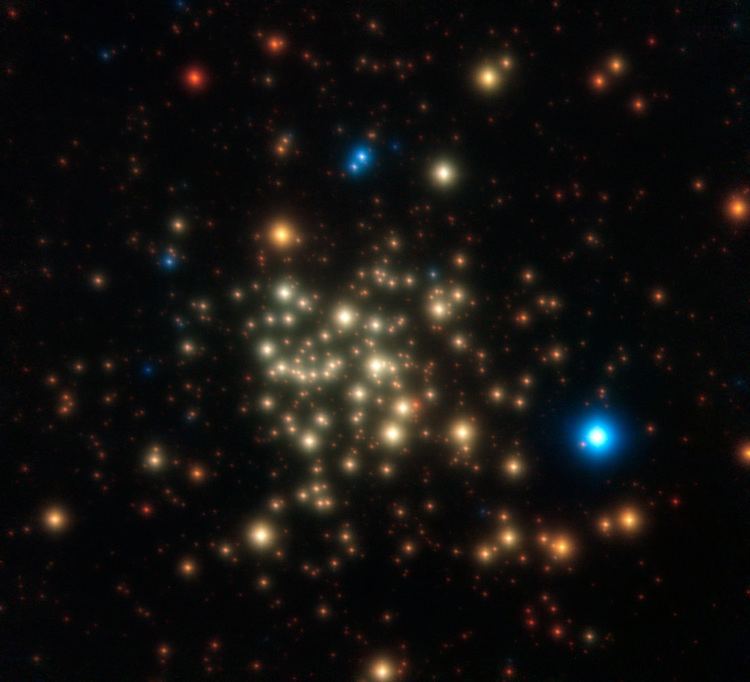Right ascension 17 45 50.5 Distance 25 kly / 8.5 kpc | Declination –28° 49′ 28″ Notable features Optically obscured | |
 | ||
The Arches Cluster is the densest known star cluster in the Milky Way located about 100 light years from its center, in the constellation Sagittarius (The Archer), 25,000 light-years from Earth. The discovery of this cluster was reported by Nagata et al. in 1995, and independently by Cotera et al. in 1996. Due to extremely heavy optical extinction by dust in this region, the Arches Cluster is obscured in the visual bands, and is observed in the X-ray, infrared, and radio bands. It contains approximately 135 young, very hot stars that are many times larger and more massive than the Sun, plus many thousands of less massive stars.
This star cluster is estimated to be around two and a half million years old. Although larger and denser than the nearby Quintuplet Cluster, it appears to be slightly younger. The most evolved stars are barely edging away from the main sequence while the Quintuplet Cluster includes a number of hot supergiants as well as a red supergiant and three Luminous Blue Variables.
Work by Donald Figer, an astronomer at the Rochester Institute of Technology suggests that 150 solar masses (M☉) is the upper limit of stellar mass in the current era of the universe. He used the Hubble Space Telescope to observe about a thousand stars in the Arches cluster and found no stars over that limit despite a statistical expectation that there should be several. However, later research demonstrated a very high sensitivity of the calculated star masses upon the extinction laws used for mass derivation, which can affect the upper mass limit by about 30% using different extinction laws (possibly from 150 M☉ to about 100 M☉).
